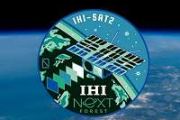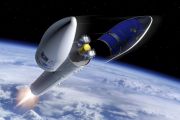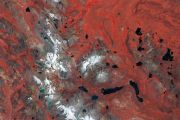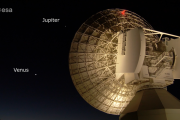
Copernical Team
Integrated spin wave storage advances quantum networks
 The University of Science and Technology of China has achieved a significant milestone in quantum memory research, addressing a long-standing challenge in integrated solid-state devices. The team, led by Chuan-Feng Li and Zong-Quan Zhou, has demonstrated an integrated spin-wave quantum memory capable of extended storage times and on-demand retrieval. This development marks a critical step toward
The University of Science and Technology of China has achieved a significant milestone in quantum memory research, addressing a long-standing challenge in integrated solid-state devices. The team, led by Chuan-Feng Li and Zong-Quan Zhou, has demonstrated an integrated spin-wave quantum memory capable of extended storage times and on-demand retrieval. This development marks a critical step toward New quantum sensing technology reveals sub-atomic signals
 Since the 1950s, scientists have used radio waves to uncover the molecular "fingerprints" of unknown materials, aiding in tasks as varied as scanning the human body with MRI machines and detecting explosives at airports.
These methods, however, rely on signals averaged from trillions of atoms, making it impossible to detect tiny variations between individual molecules. Such limitations hin
Since the 1950s, scientists have used radio waves to uncover the molecular "fingerprints" of unknown materials, aiding in tasks as varied as scanning the human body with MRI machines and detecting explosives at airports.
These methods, however, rely on signals averaged from trillions of atoms, making it impossible to detect tiny variations between individual molecules. Such limitations hin RTX and Ursa Major advance long-range rocket technology for US Army
 Raytheon, an RTX (NYSE: RTX) business, in collaboration with Ursa Major, has announced the successful missile flight test of their advanced long-range solid rocket motor developed for the U.S. Army. Leveraging their expertise in digital engineering, the companies have accelerated the design and development of a capability that promises to redefine precision-guided munitions.
"These long-ra
Raytheon, an RTX (NYSE: RTX) business, in collaboration with Ursa Major, has announced the successful missile flight test of their advanced long-range solid rocket motor developed for the U.S. Army. Leveraging their expertise in digital engineering, the companies have accelerated the design and development of a capability that promises to redefine precision-guided munitions.
"These long-ra RoboForce secures $10M to launch AI-powered robotic workforce
 RoboForce, a pioneering provider of robotic labor solutions, has announced the completion of $10 million in early-stage funding. Supported by prominent investors such as Nobel Laureate Myron Scholes, Softbank VC co-founder Gary Rieschel, and Carnegie Mellon University, the funding marks a significant milestone for the company.
With this backing, RoboForce is set to emerge from stealth mode
RoboForce, a pioneering provider of robotic labor solutions, has announced the completion of $10 million in early-stage funding. Supported by prominent investors such as Nobel Laureate Myron Scholes, Softbank VC co-founder Gary Rieschel, and Carnegie Mellon University, the funding marks a significant milestone for the company.
With this backing, RoboForce is set to emerge from stealth mode Vortex vehicle computer enhances AI and SATCOM capabilities
 RuggON, a specialist in ruggedized computing solutions, has introduced the Vortex vehicle-mount computer, designed to integrate advanced AI capabilities and SATCOM readiness. This new system aims to support industries reliant on dependable and efficient vehicle-mounted technology.
The Vortex platform offers a powerful combination of hardware and software tailored for use in extreme environ
RuggON, a specialist in ruggedized computing solutions, has introduced the Vortex vehicle-mount computer, designed to integrate advanced AI capabilities and SATCOM readiness. This new system aims to support industries reliant on dependable and efficient vehicle-mounted technology.
The Vortex platform offers a powerful combination of hardware and software tailored for use in extreme environ S4S establishes strategic vision after first year of successes
 On Dec. 6, 2023, U.S. Space Forces - Space stood up as the Space Force Service Component to U.S. Space Command.
The activation of S4S was part of U.S. Space Force's plan to normalize the presentation of space forces across combatant commands and most efficiently meet the challenges presented by the dynamic national security environment and the return to Great Power Competition.
"It i
On Dec. 6, 2023, U.S. Space Forces - Space stood up as the Space Force Service Component to U.S. Space Command.
The activation of S4S was part of U.S. Space Force's plan to normalize the presentation of space forces across combatant commands and most efficiently meet the challenges presented by the dynamic national security environment and the return to Great Power Competition.
"It i Unlocking the hidden power of boiling - for energy, space, and beyond
 Most people take boiling water for granted. For Associate Professor Matteo Bucci, uncovering the physics behind boiling has been a decade-long journey filled with unexpected challenges and new insights.
The seemingly simple phenomenon is extremely hard to study in complex systems like nuclear reactors, and yet it sits at the core of a wide range of important industrial processes. Unlocking
Most people take boiling water for granted. For Associate Professor Matteo Bucci, uncovering the physics behind boiling has been a decade-long journey filled with unexpected challenges and new insights.
The seemingly simple phenomenon is extremely hard to study in complex systems like nuclear reactors, and yet it sits at the core of a wide range of important industrial processes. Unlocking Italy's Meloni denies discussing SpaceX deal with Musk
 Italian Prime Minister Giorgia Meloni denied Thursday talking to Elon Musk about a cybersecurity deal with the American billionaire's SpaceX company following reports that sparked controversy in Italy.
"I have never spoken personally with Musk about these matters," she told journalists at her annual press conference in Rome.
In the wake of Meloni's whirlwind visit with President Donald T
Italian Prime Minister Giorgia Meloni denied Thursday talking to Elon Musk about a cybersecurity deal with the American billionaire's SpaceX company following reports that sparked controversy in Italy.
"I have never spoken personally with Musk about these matters," she told journalists at her annual press conference in Rome.
In the wake of Meloni's whirlwind visit with President Donald T Top three images from BepiColombo's sixth Mercury flyby

On 8 January 2025, the ESA/JAXA BepiColombo mission flew past Mercury for the sixth time, successfully completing the final ‘gravity assist manoeuvre’ needed to steer it into orbit around the planet in late 2026. The spacecraft flew just a few hundred kilometres above the planet's north pole. Close-up images expose possibly icy craters whose floors are in permanent shadow, and the vast sunlit northern plains.
Gilat completes acquisition of Stellar Blu Solutions
 Gilat Satellite Networks Ltd. (Nasdaq: GILT, TASE: GILT) has finalized the acquisition of Stellar Blu Solutions LLC, a US-based innovator in next-generation SATCOM terminal technologies. This strategic move positions Gilat to strengthen its role in the expanding In-Flight Connectivity (IFC) market.
Based on Stellar Blu's strong backlog, Gilat projects annual revenues from the acquisition t
Gilat Satellite Networks Ltd. (Nasdaq: GILT, TASE: GILT) has finalized the acquisition of Stellar Blu Solutions LLC, a US-based innovator in next-generation SATCOM terminal technologies. This strategic move positions Gilat to strengthen its role in the expanding In-Flight Connectivity (IFC) market.
Based on Stellar Blu's strong backlog, Gilat projects annual revenues from the acquisition t 






























